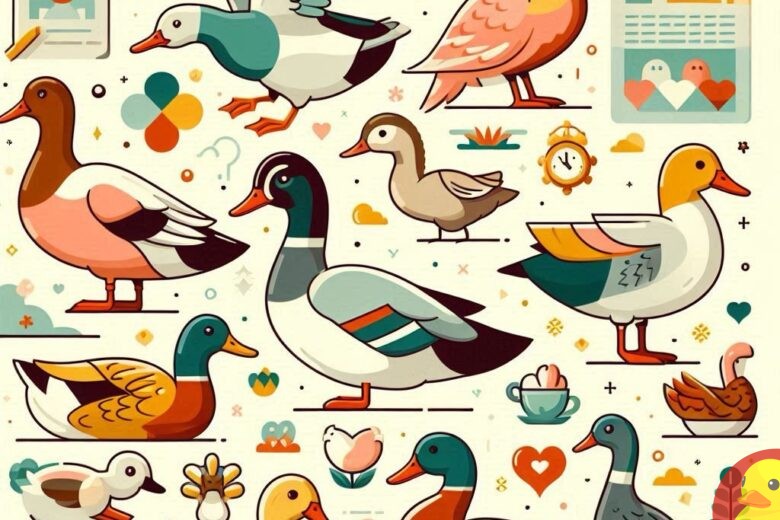Types of Ducks — Quack, quack, welcome to our waterfowl wonderland! Ducks are some of the most charming creatures to grace our lakes, ponds, and rivers. From their colorful plumage to their playful antics, ducks have captured the hearts of birdwatchers and nature lovers alike. In this blog post, we’ll dive into the world of ducks and explore some of the fascinating types that you might encounter.
Types of Ducks
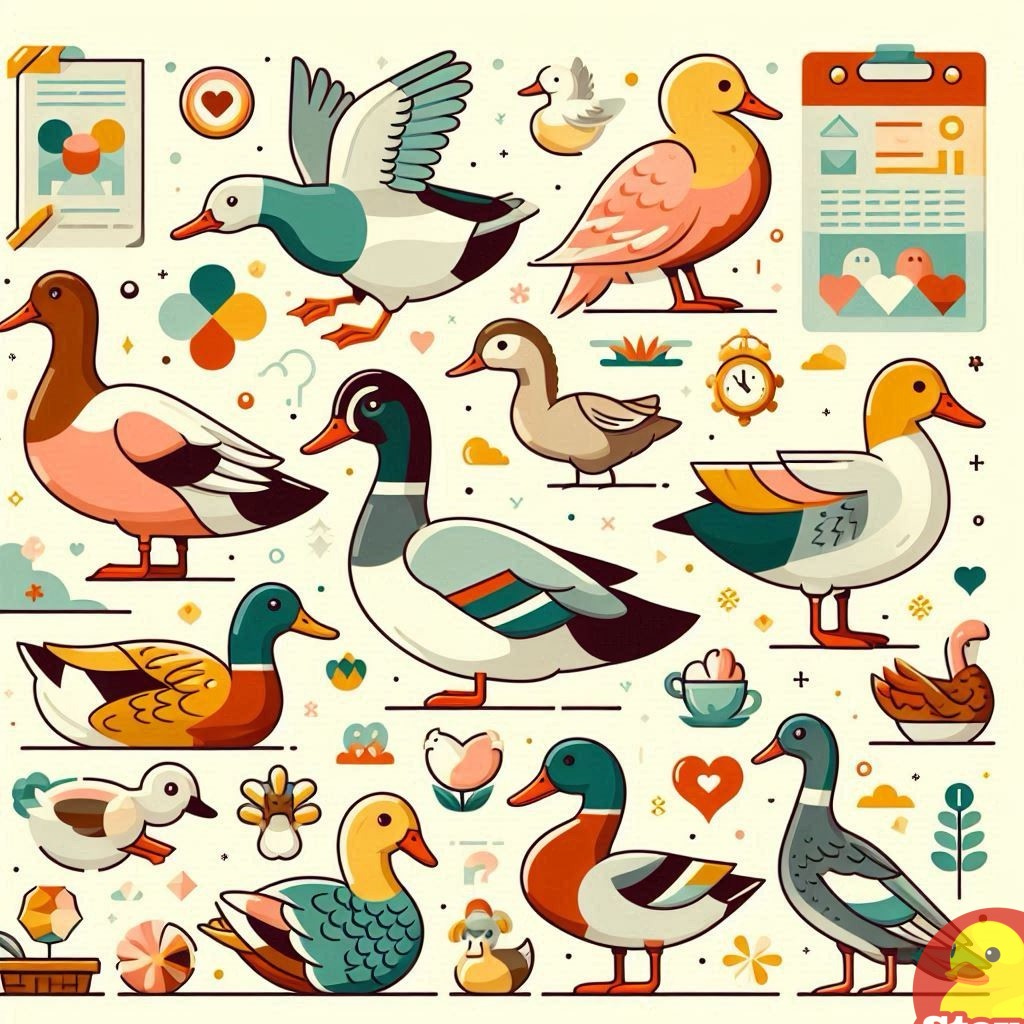
1. Mallard Duck
(Anas platyrhynchos)
The mallard duck is perhaps the most well-known and widely recognized duck species. Males, or drakes, are easily identified by their iridescent green heads, white neck rings, and chestnut-brown chests. Females, or hens, sport mottled brown plumage that provides excellent camouflage. Mallards are highly adaptable and can be found in various habitats, from urban parks to remote wetlands.
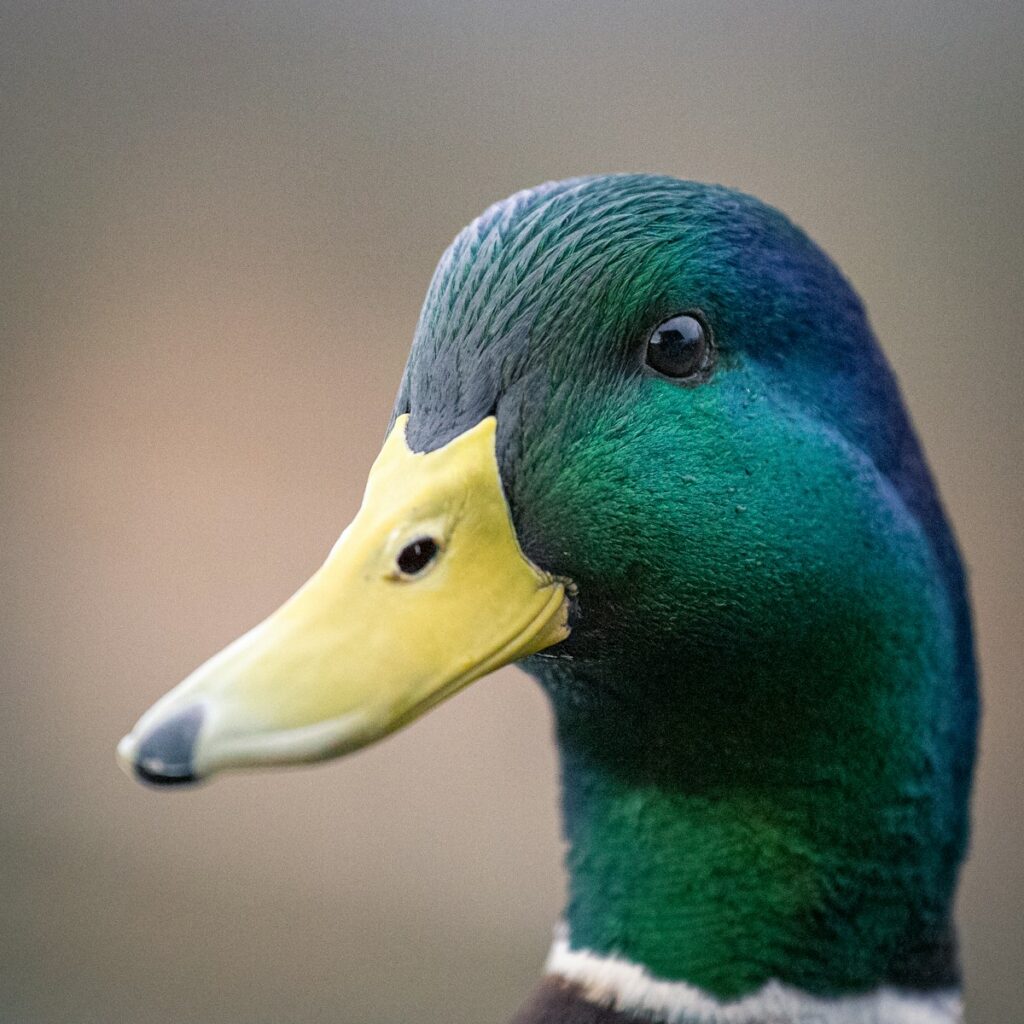
The baby ducklings in the newer Dawn Dish Sosp are mallard ducks.
2. Wood Duck
(Aix sponsa)
Wood ducks are a sight to behold with their striking plumage. Males feature a glossy green head, red eyes, and intricate patterns of white, chestnut, and iridescent blue. Females are more subdued but still beautiful, with their brown bodies and distinctive white eye rings. These ducks are often found in wooded swamps, marshes, and ponds, where they nest in tree cavities.
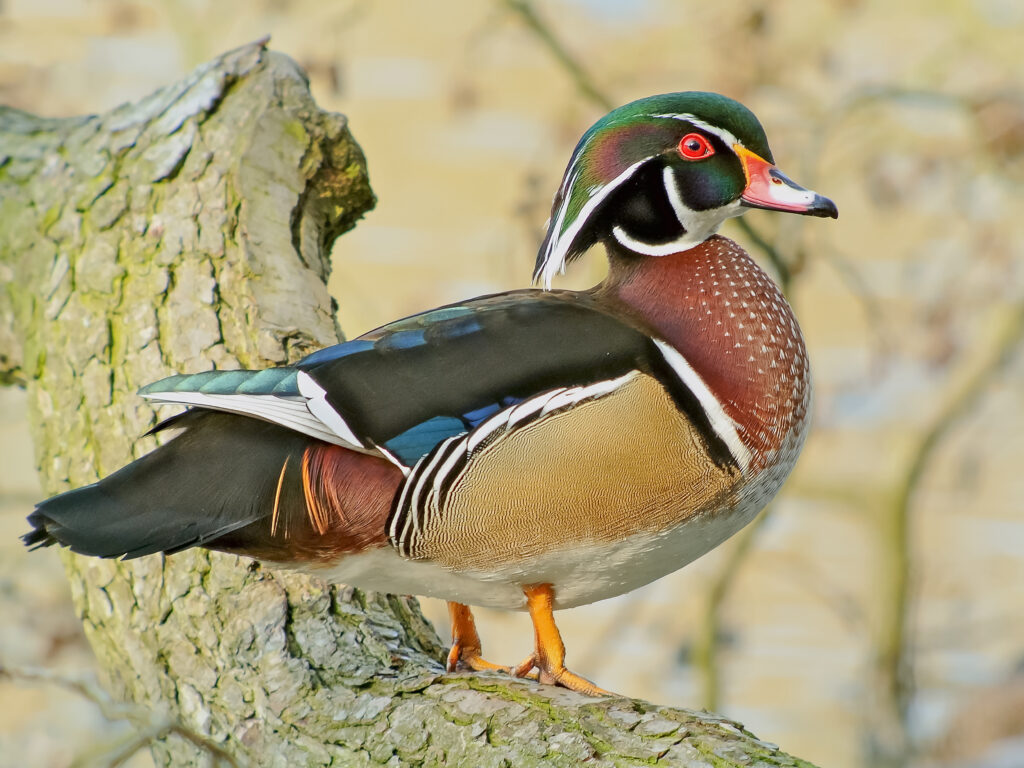
3. Northern Pintail
(Anas acuta)
The northern pintail is an elegant and slender duck with a distinctive long neck and pointed tail feathers. Males have a sleek brown head, white neck, and grayish bodies, while females are mottled brown. Pintails are known for their graceful flight and are often seen in wetlands and open water areas during migration.
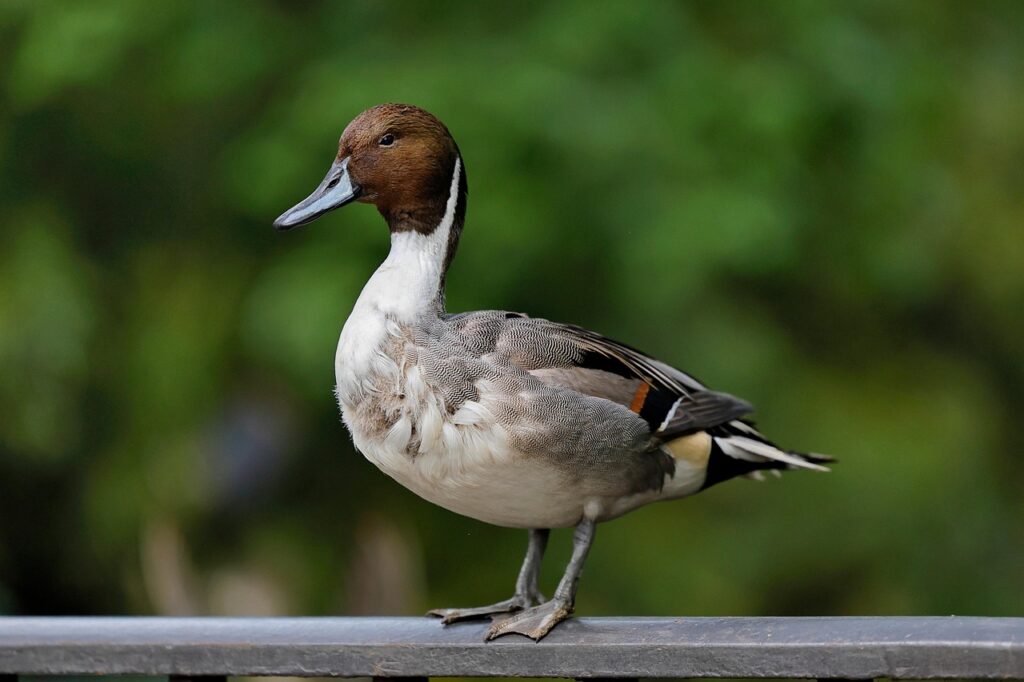
4. Blue-Winged Teal
(Spatula discors)
Blue-winged teals are small, fast-flying ducks with striking blue patches on their wings. Males have a blue-gray head with a distinctive white crescent in front of their eyes, while females are mottled brown. These ducks prefer shallow freshwater habitats such as marshes, ponds, and flooded fields.
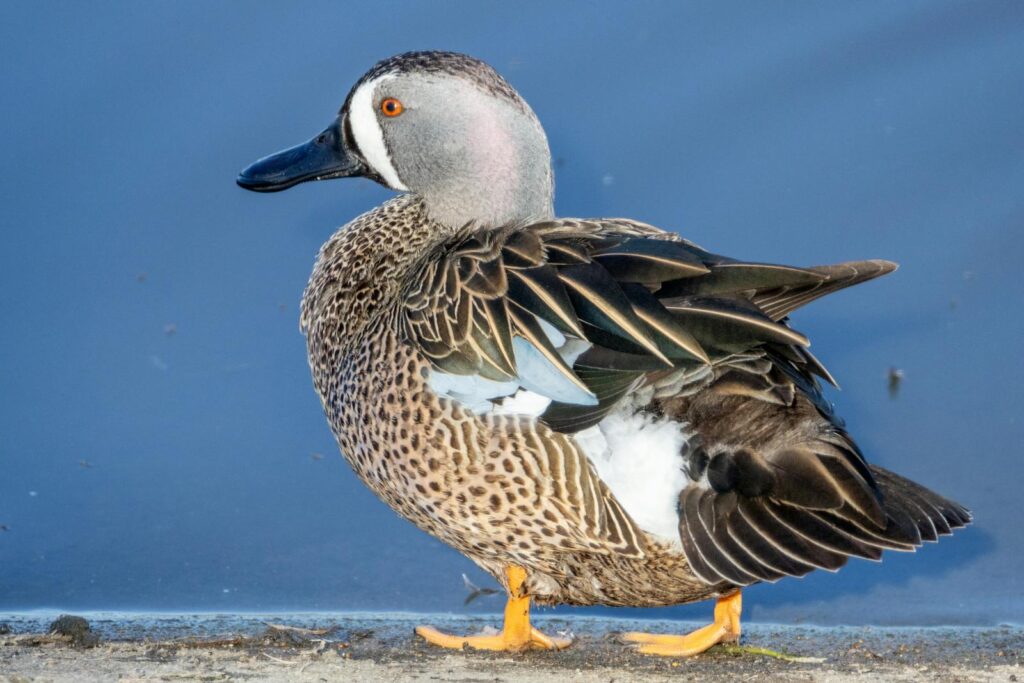
5. American Wigeon
(Mareca americana)
American wigeons are medium-sized ducks with a unique appearance. Males have a green stripe running from their eyes to the back of their heads, a white crown, and a pinkish-brown body. Females are mottled brown with a grayish head. Wigeons are often found in wetlands, lakes, and marshes, where they feed on aquatic vegetation.
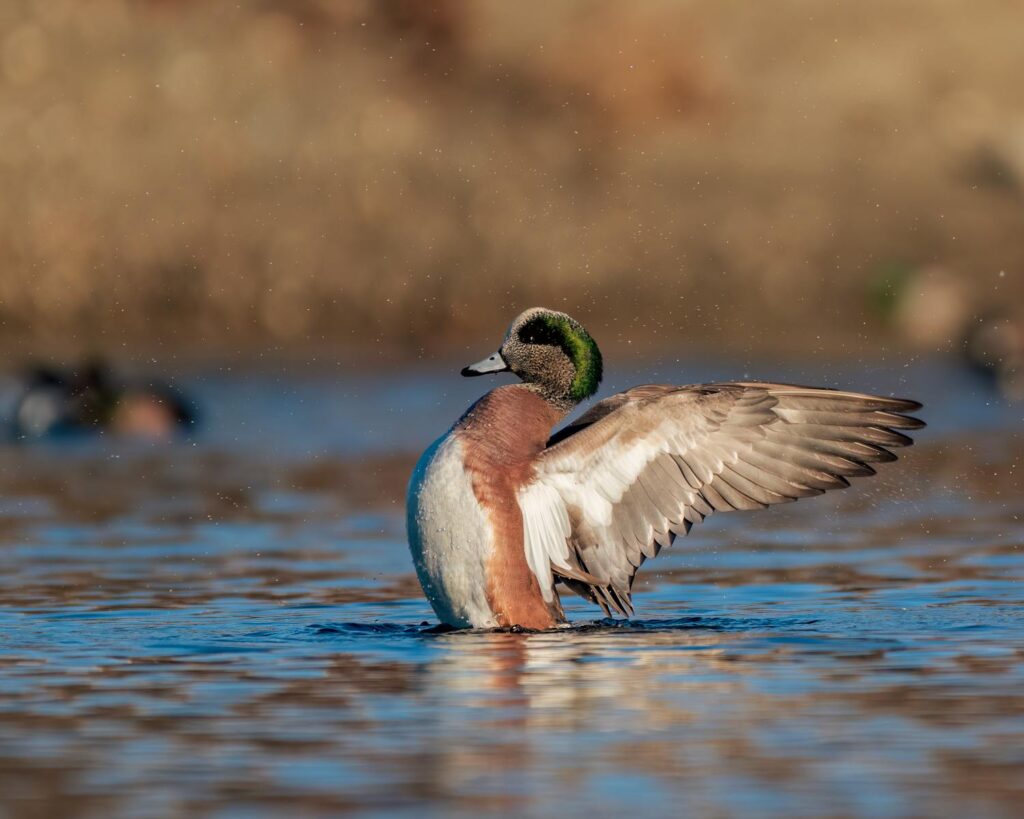
6. Canvasback
(Aythya valisineria)
Canvasbacks are large diving ducks known for their distinctive sloping profile and striking coloration. Males have a reddish-brown head, black chest, and white body, while females are mottled brown. These ducks prefer deep, open water habitats such as lakes and large ponds.
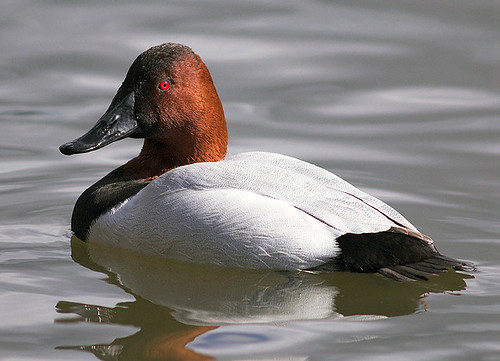
7. Northern Shoveler
(Spatula clypeata)
Northern shovelers are easily recognized by their large, spoon-shaped bills. Males have a green head, white chest, and chestnut-brown sides, while females are mottled brown. Shovelers are often found in shallow wetlands, marshes, and ponds, where they use their specialized bills to filter food from the water.
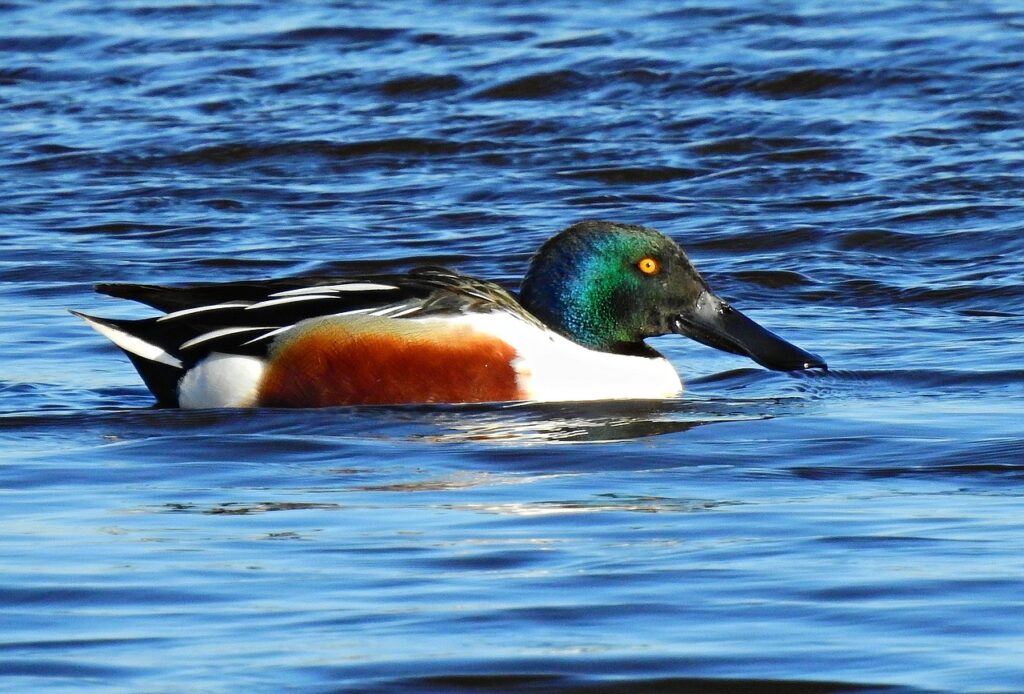
8. Ruddy Duck
(Oxyura jamaicensis)
Ruddy ducks are small, stiff-tailed ducks with a unique appearance. Males have bright chestnut bodies, sky-blue bills, and a distinctive black head. Females are brown with a grayish face. These ducks prefer freshwater marshes, ponds, and lakes, where they are often seen diving and foraging for aquatic insects.
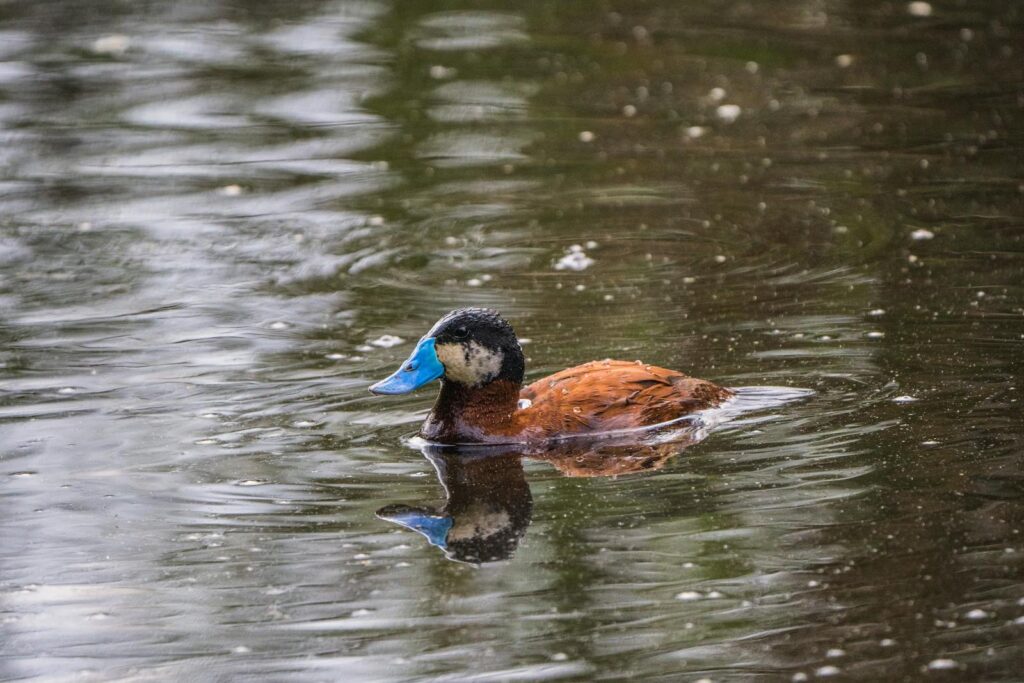
9. Peking Duck
(Anas platyrhynchos domesticus)
The Peking duck is a domesticated breed known for its pristine white feathers and large size. These ducks are widely bred for their meat and are particularly famous in Chinese cuisine. Peking ducks have a calm demeanor and are easily recognizable by their bright white plumage and orange bills. They are often kept on farms and in backyard flocks, making them a common sight in both rural and suburban areas.
The Aflac Duck is a Peking Duck.
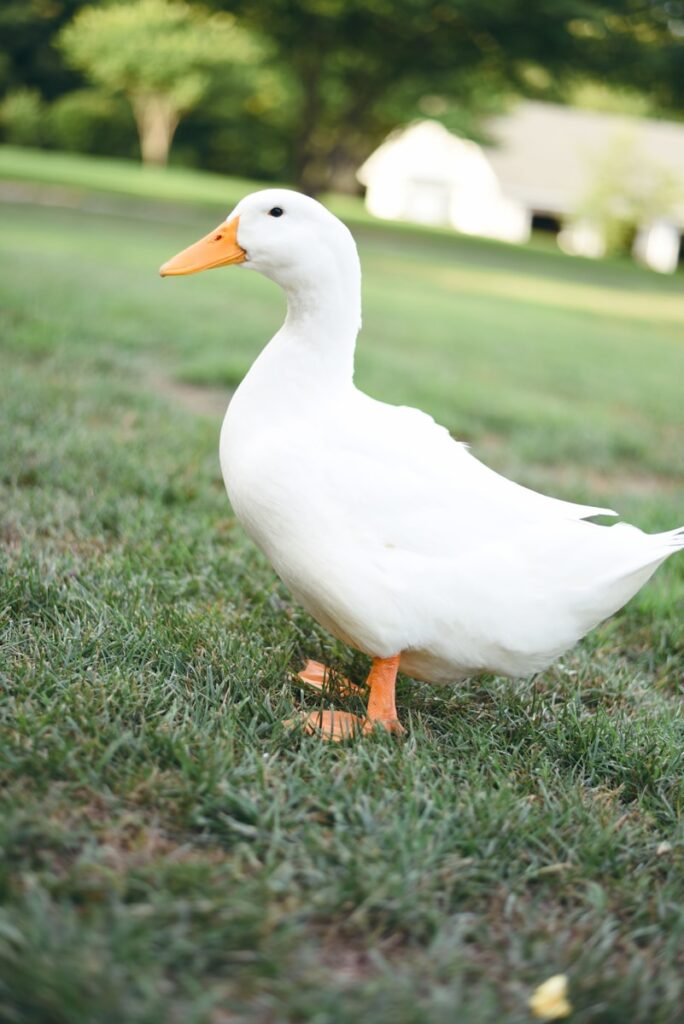
9. Rubber Duck
(Toyus quackus)
The rubber duck is an iconic symbol of childhood and bathtime fun. Unlike its feathered counterparts, the rubber duck is made from soft, buoyant materials like rubber or vinyl. Typically bright yellow with an orange beak, this cheerful toy has become a beloved staple in many households. While it doesn’t quack, swim, or fly, the rubber duck brings a sense of joy and nostalgia to both young and old. Its primary habitat is the bathtub, where it can often be found floating serenely among bubbles.
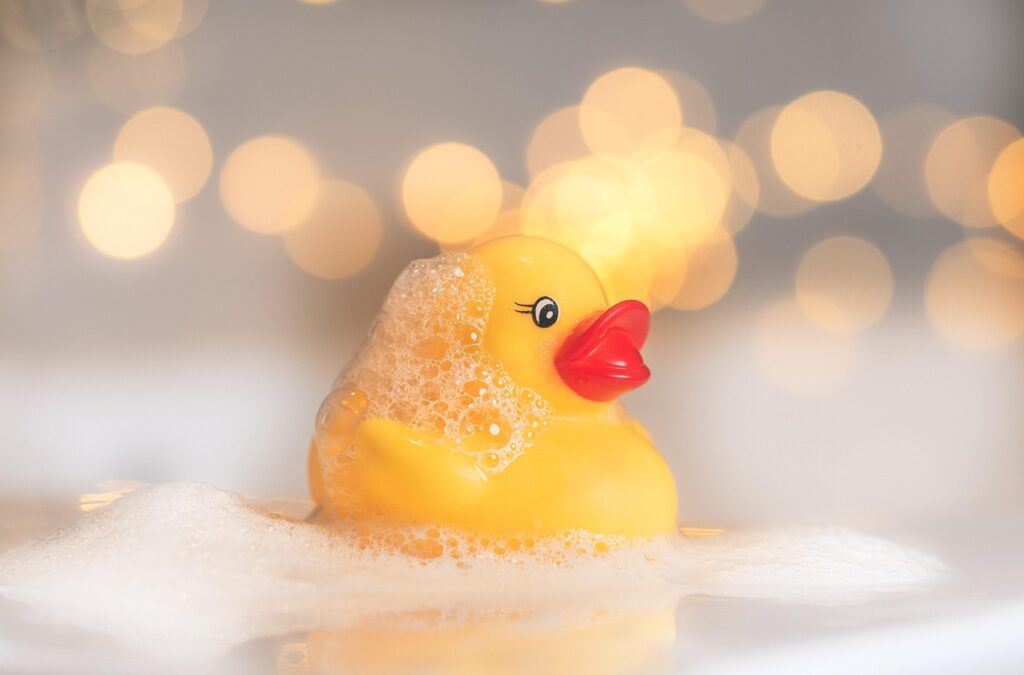
11. Decoy Duck
(Decorus artificialis)
The decoy duck is not a living species but rather a crafted object used by hunters to attract real ducks. These lifelike models are designed to mimic the appearance and behavior of actual ducks, often made from wood, plastic, or other durable materials. Decoy ducks come in various species representations, with some of the most common being mallards, pintails, and teal. They are strategically placed in water bodies to create the illusion of a safe and populated area, thereby luring real ducks within range. While they don’t quack, swim, or fly, decoy ducks play a crucial role in waterfowl hunting traditions.
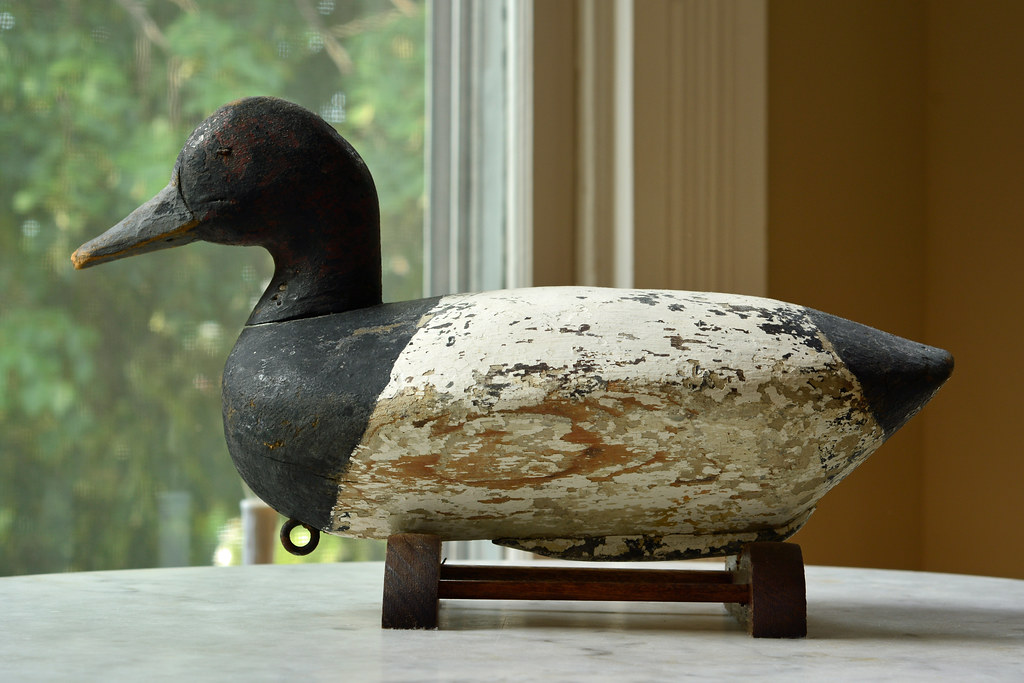
12. Anthropomorphic Ducks
Anthropomorphic ducks transform ordinary waterfowl into imaginative characters with human-like traits. They blend humor and storytelling to create unique personas, whether it’s a detective duck solving mysteries or a chef duck crafting culinary masterpieces. Themes, backstories, and accessories—like sunglasses, scarves, or miniature guitars—add charm and individuality. These quirky ducks remind us that creativity can turn the everyday into the extraordinary.
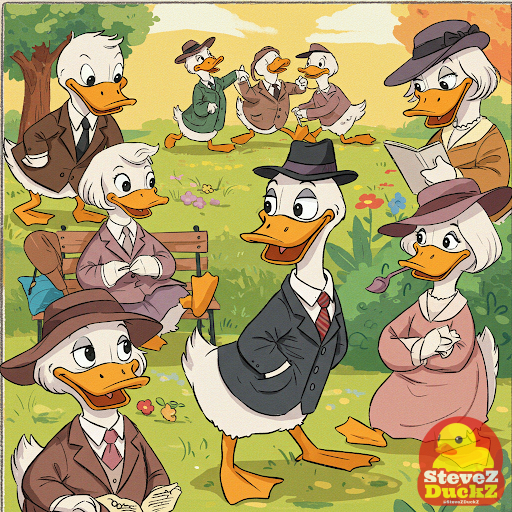
A lot of examples are famous ducks in movies and cartoons.
There you have it, a comprehensive array of ducks that you might encounter in the wild, at home, or even in hunting settings. Each type of duck has its own unique characteristics and charm, making them a joy to observe and appreciate. Happy duck-watching and duck-appreciating!
Famous ducks are based off some of these breeds of ducks.
I hope you enjoyed this exploration of the different types of ducks. If I left off a type or breed of duck, please let SteveZ DuckZ know in the duckie comments.
Steve is a collector of rubber ducks. At SteveZ DuckZ, Steve will share off his rubber duck collection and share blog post relating to rubber ducks. If you love rubber ducks, please follow on social media or subscribe!
Discover more from SteveZ DuckZ
Subscribe to get the latest posts sent to your email.

